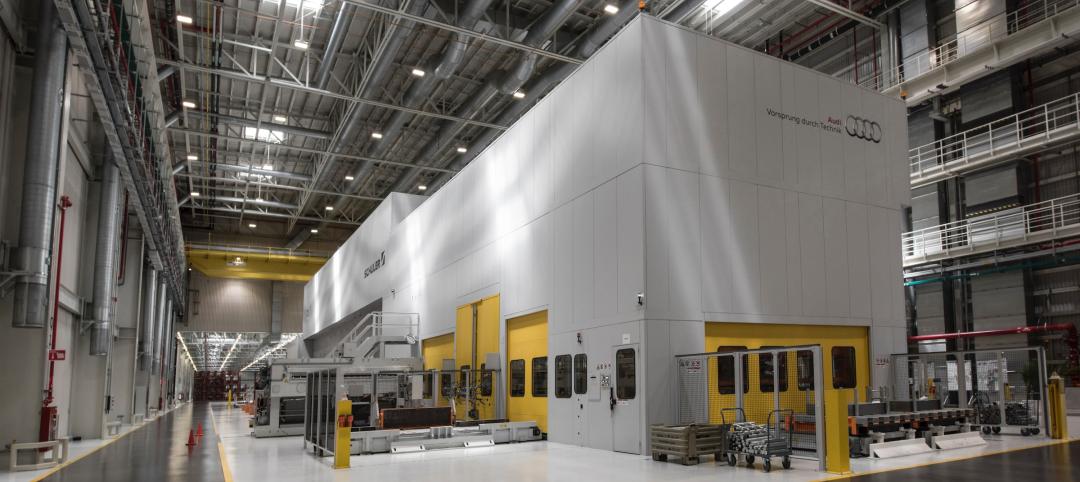For centuries, the AEC industry has clung to traditional methods and legacy processes—seated patterns that have bred resistance to change. This has made the adoption of new technologies a slow and hesitant process. Risk aversion, the industry's fragmented nature, regulatory inefficiencies, and a lack of standardization have contributed to the slow digital transformation as well.
However, increasing awareness of the benefits of digital transformation is gradually shifting AEC towards modernization. Industry professionals are realizing the impact of technology on their sector's ability to thrive in a rapidly evolving environment, promising a brighter and more tech-driven future for the field.
Why is Digitalization Accelerating Now?
The shift we’re talking about didn’t happen overnight though. Old habits die hard, especially when tradition reigns supreme. However, new trends began to disrupt the status quo, spurred by the urgent need for greater efficiency and reduced costs.
Paper-based processes, plagued by inefficiencies, led to delays, cost overruns, and quality issues too often. The industry needed a change, technology offered the solution. And the four factors below accelerated the adoption:
1. Technology Providers
The landscape of AEC-specific technology has evolved significantly in the past five years.
The adoption of software has surged, with Building Information Modeling (BIM) becoming a standard. Cloud-based construction project software is now the norm, and mobile apps have become indispensable for construction project management. Drones and aerial imaging are widely used for site inspections, surveying, and progress monitoring.
This transformation is largely due to companies specializing in construction software actively developing and marketing tools tailored to the industry.
Key tools like Procore, Autodesk, and Fieldwire have made innovation a norm. New powerful players like Fluix and Raken have entered the market, introducing competition and often focusing on specific niches, like safety inspections or daily field reporting or procurement management.

2. Industry Leaders
Forward-thinking construction companies and industry associations have recognized the potential of digital tools and processes. Related media consistently feature well-known names and major construction companies leveraging technology to improve their operations:
- Turner Construction uses data analytics to optimize construction processes and make data-driven decisions.
- Skanska employs Virtual Design and Construction (VDC) to create 3D models of their projects for better visualization and clash detection.
- Bechtel employs augmented reality (AR) to assist on-site work, overlaying digital information onto physical construction sites.
- AECOM invests in digital twin technology to create virtual replicas of physical infrastructure projects.
- Mortenson Construction embraces integrated project delivery (IPD) and lean construction methods to enhance collaboration and communication among project stakeholders.
The list goes on. These adoptions have set examples, and served as a roadmap for other companies in the industry to follow and embark on their digital transformation journeys.
3. Government Initiatives
Governments worldwide recognized the potential of digital transformation in the AEC industry. They began promoting the adoption of BIM and other digital tools to enhance infrastructure planning and development.
This promotion comes from understanding that digitally smart countries can attract international investment and be more competitive in the global marketplace, creating jobs and strengthening economics.
For instance, the U.S. established the National BIM Standard-United States (NBIMS-US) to promote BIM adoption, while various states enacted the Digital Signatures and Records Act to ease electronic document submission and storage. Other countries have also launched similar initiatives to enhance construction efficiency and productivity through digital technology adoption. Think of the BIM Level 2 Mandate and Construction Strategy 2025 in the UK, Building and Construction Authority (BCA) and Smart Nation Initiative in Singapore, National BIM Mandate in Australia, the EU's BIM Task Group and Level(s) initiatives and many more.

4. Sustainability Imperative
The growing demand for sustainability is the last but not the least factor punching companies to go more digital. With increased public awareness of environmental concerns, the AEC sector is under pressure to reduce the industry's carbon footprint and adopt more eco-friendly practices.
And digital transformation enables us to design such practices, helping construct buildings and infrastructure with greater energy efficiency, lower emissions, and sustainable materials.
Through tools like BIM, advanced simulations, and data analytics, the industry can optimize designs for energy consumption, waste reduction, and overall sustainability. New regulations, activism, and client demands for environmentally responsible projects further push AEC firms to adopt digital technologies for greener and more sustainable construction practices. This makes sustainability a significant driver in the digital transformation journey especially when it comes to big companies with the reputation at stake.
Last Word
As you see, the surge of digital transformation in the AEC industry is influenced by a variety of factors. While traditional practices have deep historical roots, new trends and behaviors contribute to the digital acceleration. The AEC sector is gradually evolving towards a more sustainable, tech-driven future, in response to the changing business landscape and public demand.
This is the first article in a three-part series on digital transformation. Click here to read part two: 4 ways AEC firms can benefit from digital transformation
Related Stories
Giants 400 | Oct 23, 2023
Top 115 Multifamily Construction Firms for 2023
Clark Group, Suffolk Construction, Summit Contracting Group, Whiting-Turner Contracting, and McShane Companies top the ranking of the nation's largest multifamily housing sector contractors and construction management (CM) firms for 2023, as reported in Building Design+Construction's 2023 Giants 400 Report. Note: This ranking factors revenue for all multifamily buildings work, including apartments, condominiums, student housing facilities, and senior living facilities.
Senior Living Design | Oct 19, 2023
Senior living construction poised for steady recovery
Senior housing demand, as measured by the change in occupied units, continued to outpace new supply in the third quarter, according to NIC MAP Vision. It was the ninth consecutive quarter of growth with a net absorption gain. On the supply side, construction starts continued to be limited compared with pre-pandemic levels.
Warehouses | Oct 19, 2023
JLL report outlines 'tremendous potential' for multi-story warehouses
A new category of buildings, multi-story warehouses, is beginning to take hold in the U.S. and their potential is strong. A handful of such facilities, also called “urban logistics buildings” have been built over the past five years, notes a new report by JLL.
Building Materials | Oct 19, 2023
New white papers offer best choices in drywall, flooring, and insulation for embodied carbon and health impacts
“Embodied Carbon and Material Health in Insulation” and “Embodied Carbon and Material Health in Gypsum Drywall and Flooring,” by architecture and design firm Perkins&Will in partnership with the Healthy Building Network, advise on how to select the best low-carbon products with the least impact on human health.
Contractors | Oct 19, 2023
Crane Index indicates slowing private-sector construction
Private-sector construction in major North American cities is slowing, according to the latest RLB Crane Index. The number of tower cranes in use declined 10% since the first quarter of 2023. The index, compiled by consulting firm Rider Levett Bucknall (RLB), found that only two of 14 cities—Boston and Toronto—saw increased crane counts.
Office Buildings | Oct 19, 2023
Proportion of workforce based at home drops to lowest level since pandemic began
The proportion of the U.S. workforce working remotely has dropped considerably since the start of the Covid 19 pandemic, but office vacancy rates continue to rise. Fewer than 26% of households have someone who worked remotely at least one day a week, down sharply from 39% in early 2021, according to the latest Census Bureau Household Pulse Surveys.
Contractors | Oct 19, 2023
Poor productivity cost U.S contractors as much as $40 billion last year
U.S. contractors lost between $30 billion and $40 billion in 2022 due to poor labor productivity, according to a new report from FMI Corp. The survey focused on self-performing contractors, those typically engaged as a trade partner to a general contractor.
Giants 400 | Oct 17, 2023
Top 70 Sports Facility Construction Firms for 2023
AECOM, Turner Construction, Clark Group, Mortenson head BD+C's ranking of the nation's largest sports facility contractors and construction management (CM) firms for 2023, as reported in Building Design+Construction's 2023 Giants 400 Report.
Contractors | Oct 12, 2023
3rd annual Construction Inclusion Week begins October 16-20
The annual week-long event promotes inclusion and celebrates diversity throughout the construction industry.
Giants 400 | Oct 11, 2023
Top 100 Industrial Construction Firms for 2023
ARCO Construction, Clayco, Walbridge, and Gray Construction top the ranking of the nation's largest industrial facility sector contractors and construction management (CM) firms for 2023, as reported in Building Design+Construction's 2023 Giants 400 Report.

















